The Flax Industry
The Flax Industry
in and around Yeovil
For centuries flax had been grown in the fields surrounding Yeovil and was a major local crop. The steady decline of the flax industry received a boost at the time of the Great War since flax was needed for covering the aircraft frames for the nascent Royal Flying Corps.
See also - Bunford Flax Factory and Preston Plucknett Flax Works
The following account is reproduced here courtesy of Richard Sims.
![]()
Flax Growing in
and around
Yeovil
Developments
1909-1920
The 1909
Development Act
was intended to
give financial
assistance to
agriculture and
rural areas. The
cultivation of
flax was one of
the crops
chosen.
Development
Commissioners
were appointed
under the Act to
see if flax
growing could be
made viable
again.
One of the Commissioners visited Job Gould in 1911 seeking his advice on the subject. Consequent to that visit was the setting up of the British Flax and Hemp Growers Society in July 1913. Early that year some 45 acres of flax were sown in the parishes of Bradford Abbas, East Coker, Preston Plucknett, Odcombe and Middle Chinnock; the Yeovil area having been chosen because of its long history of flax growing.
The 45 acres of flax sown yielded a harvest of 103¼ tons of flax straw and 9¾ tons of flax seed. Around the same amount was grown the following year. On harvesting, the crops were bought by the Commission and taken to the Abbey Farm of Thomas Hawkins, at Preston Plucknett, for processing. Heavy wooden rollers were used to press out the flaxseed (linseed) oil before the flax was retted in tanks of warm water, specially built for the purpose. It was decided that to make this practicable, the farmer would simply grow and harvest the flax, with it then being sent to separate processing units, such as at Preston Plucknett.
As the acreage of flax was increased in 1916 there was a need to recruit workers to process it. Advertisements for dressers and hacklers appeared in the local papers and later on in the year another for 20 women to pull the flax. The British Flax and Hemp Growers Society was also considering extending their factory at Abbey Farm, to include a new scutching machine, advertising for workmen for scutching and retting. This resulted in the new factory at Bunford.
To help with the harvesting of the flax, some 60 boys from Bristol Grammar School, many of whom cycled from the city, were brought down to South Petherton, camping there.
The following year the Society was advertising for farmers within ten miles of Yeovil to plant 400 acres of flax, for which they would pay £7 per ton. This needed an increase in the number of people needed to pull the flax. Some 400 women were needed for five weeks of the harvesting. They were paid 30/- per acre with accommodation and food provided by the Women’s Land Service Corps. In the end, over 100 women were lodging at Barwick House courtesy of the Messiter Estate. In addition, 105 soldiers from the Home Service Battalion of the Yorkshire Regiment were billeted in the surrounding villages from which they were transported by motor vehicles to the fields. It had been hoped to use a flax pulling machine from Ireland, but a shortage of spare parts prevented that from working. New depots at South Petherton and Lopen had been opened where de-seeding and dew retting would take place before the straw was taken to Abbey Farm for processing further.
With the
uncertainty
caused by the
Russian
Revolution on
the supply of
flax, it was
decided by the
Government to
take over all
flax growing,
offering a fixed
price of 25s to
35s per stone.
The aim was to
increase the
supply of flax
needed for
covering the
aircraft frames
for the newly
emerging Royal
Flying Corps as
well as the
usual shirts,
collars and
cloth. Thus,
from 1 January
1918, the
Preston
Plucknett and
Bunford
factories came
under the
control of the
Board of
Agriculture,
Flax Production
Branch, with
Jesse Crumpler
of North Coker
in command.
South
Somerset Textile
Industry
In 1918 it was
intended that a
further increase
in the amount of
flax grown would
be made and
there were
adverts placed
to recruit
farmers. In the
event, some
3,460 acres of
flax was grown.
To harvest this amount, some 1,000 workers were required. This was a complex task with preparations being completed in June. Weeding of the crop was undertaken by 120 local Boy Scouts and local women. Pulling needed some 2,000 or more women to be taken from Universities and Colleges. 563 were billeted in a tented camp at Barwick Park, 217 at Ilchester, 238 at Lenthay, Sherborne, 110 at Milborne Down, 74 at Gillingham, 514 at Hinton St. George, 268 at Wellington, 228 at South Petherton and four camps in Bridport with 85 in each. In addition, at Dorchester, use was made of 300 German POWs, who also helped in the preparation of the camps.
The pulled flax was taken to be processed at Yeovil, Dorchester, Bridport, Lopen and Taunton. While deseeding took place at Beaminster and West Chinnock.
With the war coming to an end, the long-term future of flax growing came under scrutiny. There was pressure to ensure that it had a business footing in future. The British Flax and Hemp Growers Society were still seeking grants to continue its programme started under the Board of Agriculture. There was a problem of recruitment of seasonal workers and complaints from local farmers that the Society was paying high wages and taking away workers from local farms.
In 1919, with the war over, the growing of flax was seen as a commercial operation, with the recruitment of seasonal flax workers down to the individual farmers. No women’s camps were arranged, with some farmers putting up tents and others providing lodgings on their farms. They also had to advertise for workers through the local labour exchange. With some 4,800 acres of flax being grown, it was expected that between 1,000 and 1,200 workers would be needed. They would be working in gangs and paid £3 10s per acre, based on the normal agriculture wage of 36/6 per week for men and 25/- per week for women. Camping equipment was to be provided but the workforce was expected to provide their own mess facilities, with farmers helping out. In the same year, an agreement was made with the GWR to lay a siding into the factory from the Yeovil-Taunton railway line.
After the
War, the
Ministry
disposed of
these factories
to the private
sector in 1920.
The
Wessex Flax
Factory Ltd.
In March 1920,
the Ministry of
Agriculture
disposed of the
Yeovil area
factories to the
investment
bankers Pinners
Hale, though the
business was
being run by
Messrs A
Mitchelson & Co
Ltd. Wessex Flax
Factories Ltd
was formed to
take over from
Mitchelson. The
new company had
a share capital
of £200,000 made
up of 140,000
preference
shares of £1,
plus 1,130,000
ordinary shares
of 1/- and
70,000 staff
shares of 1/-
while the
Government also
held 30,000 6%
debentures. The
directors were F
Shearman
(Chairman) of
Tiverton, W.
Harvey-Blake of
Norton-sub-Hamden,
T. Selby-Down of
Castle Cary,
Jesse Crumpler
of West Coker
who was the
Managing
Director and
Archibald
Michaelson, the
Chairman of the
Anglo-Continental
Guano Company.
After the
war, flax was
still in short
supply.
Nationally the
industry used
100,000 tons, of
which 80,000
tons came from
Russia, and in
1920 this
shortfall was
estimated to be
90,000 tons.
This led the
company to
advertise for
farmers to grow
flax under
contract,
offering £16 per
ton for straw
and seed and at
the same time
they estimated
the profit on
their ‘Wessex
Crown’ brand of
products would
be £40,000 per
year. At the
shareholders’
meeting in July,
it was revealed
that the cost of
the enterprise
was to be
reduced to
£28,000, in lieu
of £97,000, due
to the
incomplete
nature of the
factories.
South
Somerset Textile
Industry
In 1923 the
company was
forced into
receivership by
the Government,
as debenture
holders, to
protect their
interests.
However, it
caused great
concern with the
National Farmers
Union and the
farmers who were
owed money by
the company.
Meetings of flax
growers were
held in many
places and most
believed that
the company
ought to have
gone into
liquidation,
since they felt
that they would
have had a
greater chance
of getting more
of the money
owed to them.
Eventually, the
growers received
an offer from
the Government,
but this did
involve a
significant loss
to each
producer. As
debenture
holders, the
Government had a
claim on the
freehold of the
factories and
were looking for
a use for at
least some of
them.
Linen
Industry
Research
Association
In 1923 a
conference was
held in London
between the
Department of
Scientific and
Industrial
Research and a
number of other
interested
parties. The
outcome was a
decision to
develop a scheme
for the bulking
of the JWS
pedigree flax
seed, which
currently stood
at 16 tons.
In 1924, with no further progress having been made, the Linen Industry Research Association (LIRA) was asked to undertake the work for the year ending in May 1925. The factories at Bunford, Yeovil and Lopen were leased to them for that period. It was hoped that the factories, which were in a reasonable state of repair, would be able to deal with around 1,300 to 1,500 acres of flax in that time.
Growers in
Somerset were
found and
payments
arranged with
some 192 acres
sown. LIRA found
itself in a
position where
it could not
continue the
process of seed
bulking. It was
considered
essential to
provide a bulk
supply of the
JWS pedigree
flax seed for
future use.
Furthermore, it
was agreed that
the only place
in which this
could take place
was Somerset,
where facilities
for retting and
scutching still
existed. It was
not thought that
private
enterprise would
be able to carry
out the task, a
reference to the
failure of
Wessex Flax
Limited.
Flax
Industry
Development
Society Ltd.
Consequently, a
body was to be
formed to take
over the Bunford
and Lopen
factories, with
a view to them
being in full
production by
1926. This would
allow the bulked
seed to go on
sale to the flax
growing regions.
£40,000 was
needed, £15,000
of which was for
the purchase of
the factories.
The balance
would provide
the working
capital and the
operation was to
be supervised
and assisted by
the Ministry of
Agriculture. The
scheme was also
aimed at
increasing
employment in
the area.
Bunford
currently
employed only 15
hands, whereas
it was hoped to
increase this to
around 80, while
Lopen was
expected to
employ a further
40 people.
As a result, the Flax Industry Development Society Ltd was formed, which was a not-for-profit organisation funded by the Government. At the same time, the Minister of Agriculture was registered as being the freeholder of both Bunford and Lopen factories.
The process
of seed bulking
continued for a
number of years.
However, 1932
saw an end to
the experiment.
The decision to
discontinue
production in
Somerset was the
result of a
significant fall
in flax prices
in the previous
year. The aim of
increasing seed
stock and
providing flax
which would be
economically
viable had been
undermined by
the Russians
selling their
flax at a very
low price.
South
Somerset Textile
Industry
Closure of
Bunford took
place in August
1933 with Lopen
following
shortly
afterwards. In
both places, the
loss of some 50
employees at
each site was
carried out over
a period of
months as the
work ran down.
The last chapter
in this
Government
experiment was
carried out in
the auction
room, with the
sale of the
Bunford and
Lopen factories
in 1934. While
Lopen factory
found a buyer,
it was not until
the mid-1930s
that Bunford was
sold to
Aplin and
Barrett for
use as a
creamery.
Yeovil Flax during the great war
The following series of colourised photographs of young women working in the flax fields of Yeovil through to the processing of the flax, were taken by Horace Nicholls "on a farm in Yeovil" during the Great War of 1914-1918. These photographs are reproduced here under the terms of the Imperial War Museum's Non-Commercial License.
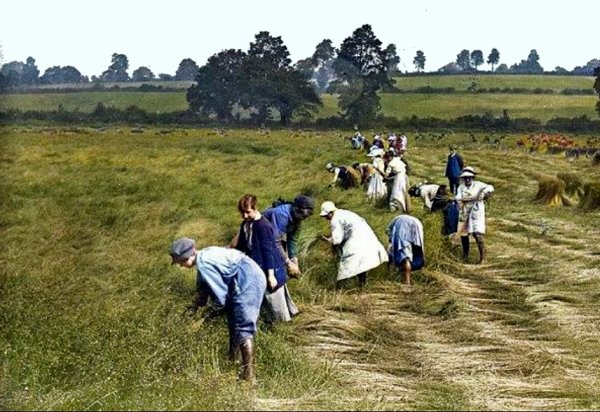
Pulling flax by hand.
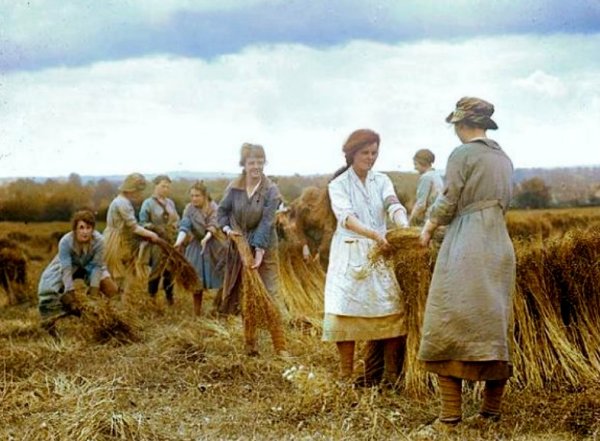
Pulling flax by hand.
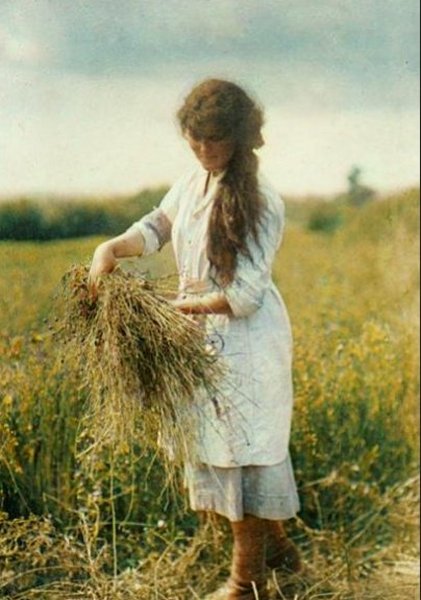
Pulling flax.
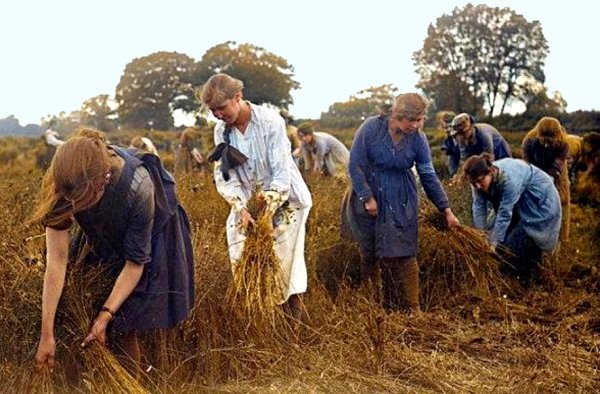
Pulling flax.
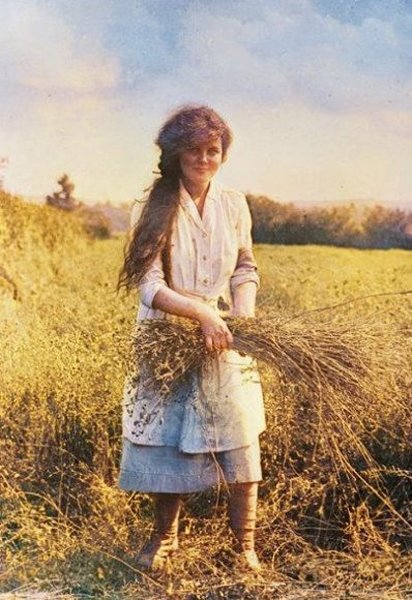
Flax pulled!
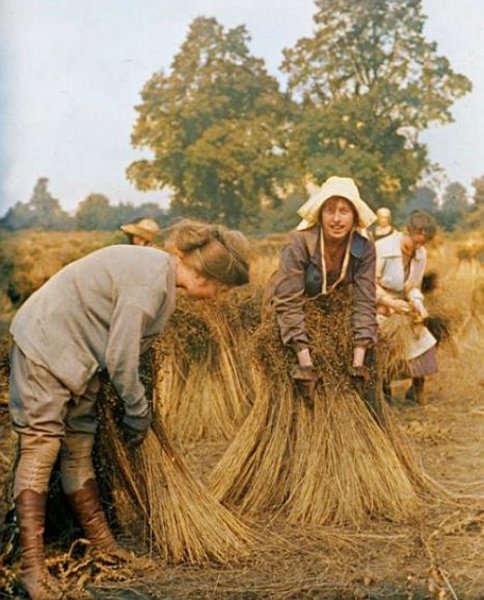
Collecting the pulled flax.
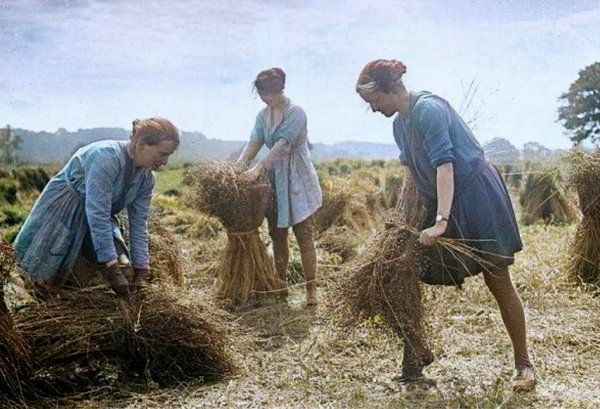
Collecting the pulled flax.
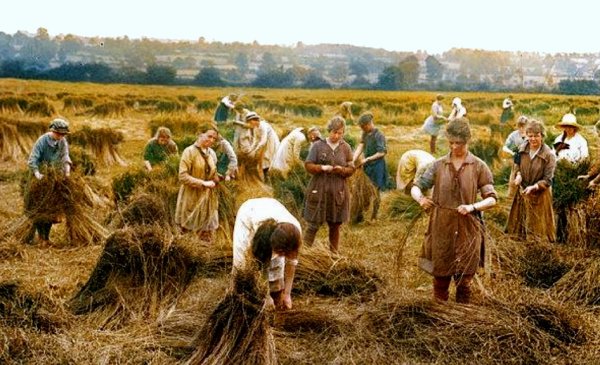
Collecting the pulled flax.
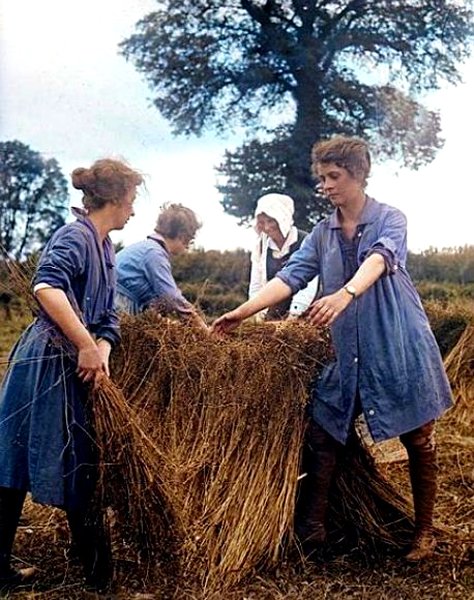
Collecting the pulled flax.
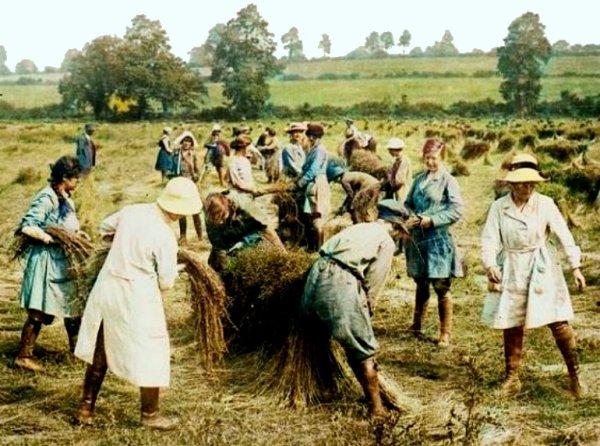
Collecting the pulled flax.
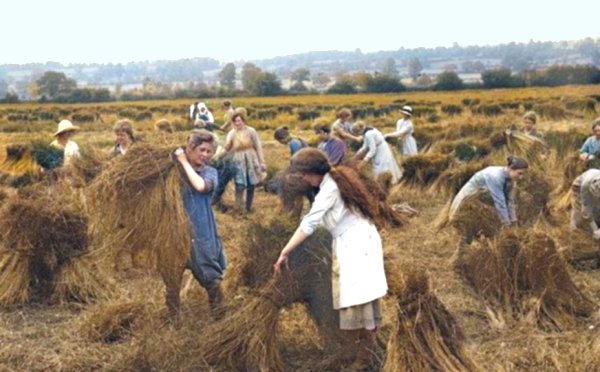
Collecting the pulled flax.
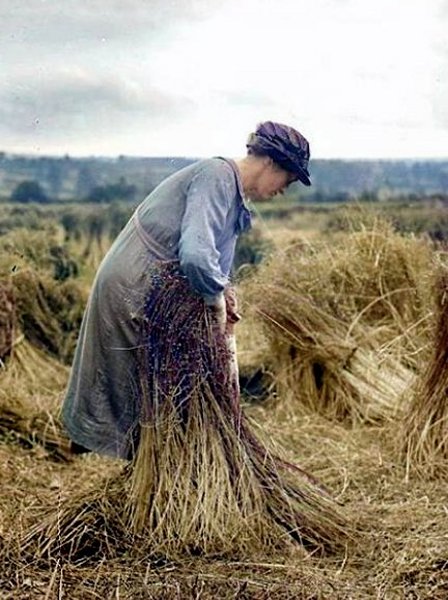
Skirting the flax.
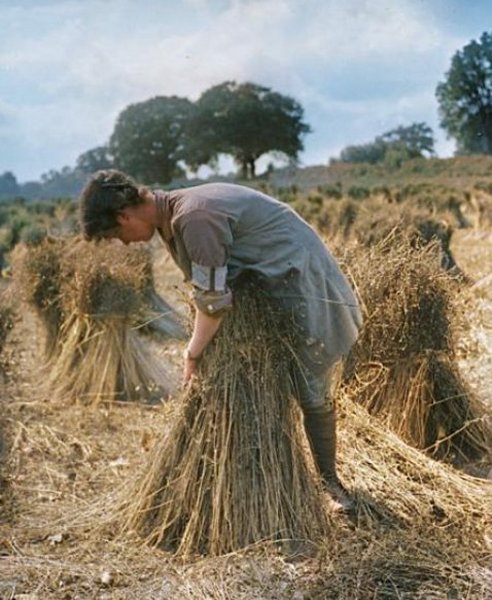
Skirting the flax.
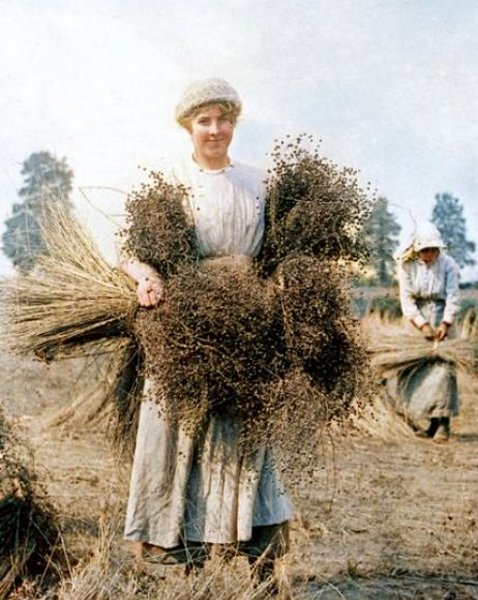
Carrying the skirted flax.

Laying out flax for dew ripening
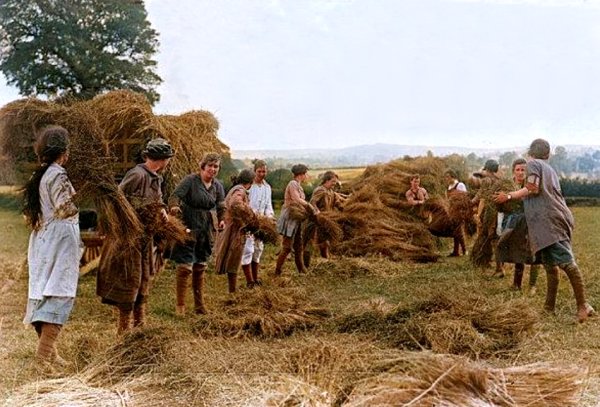
Tying and stacking the flax.
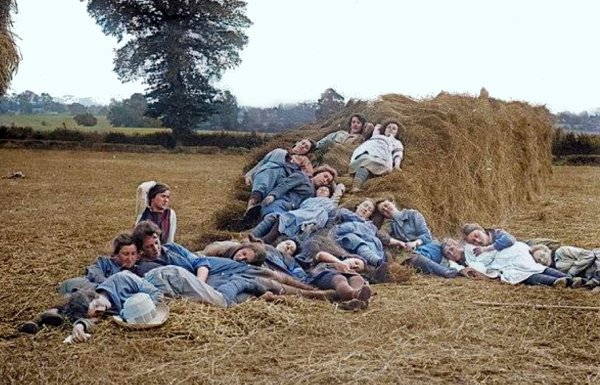
A well-deserved rest.
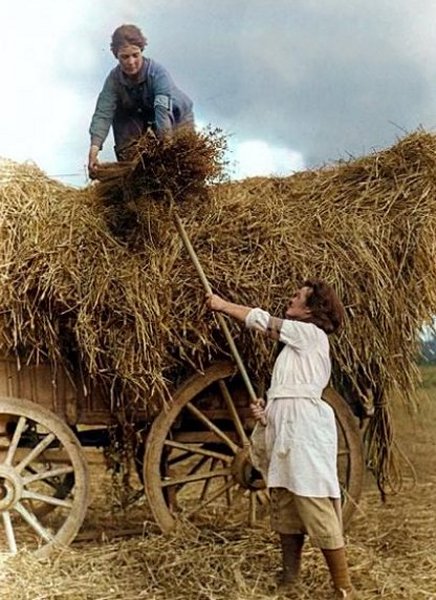
Loading the flax onto a wagon.
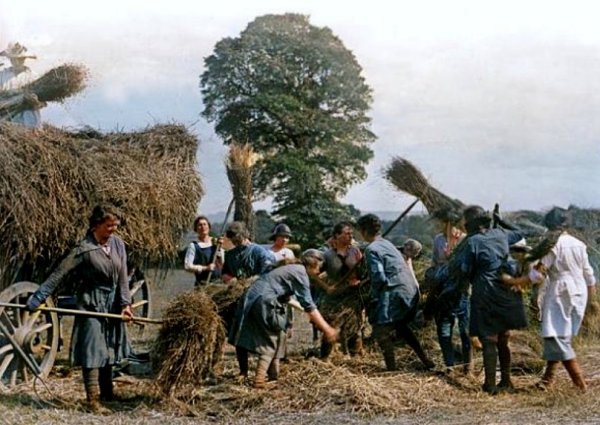
Loading the flax onto a wagon.
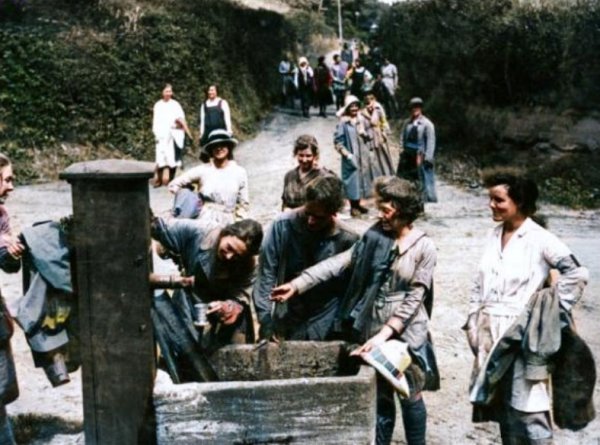
Girl workers getting a drink from a pump on their way home.
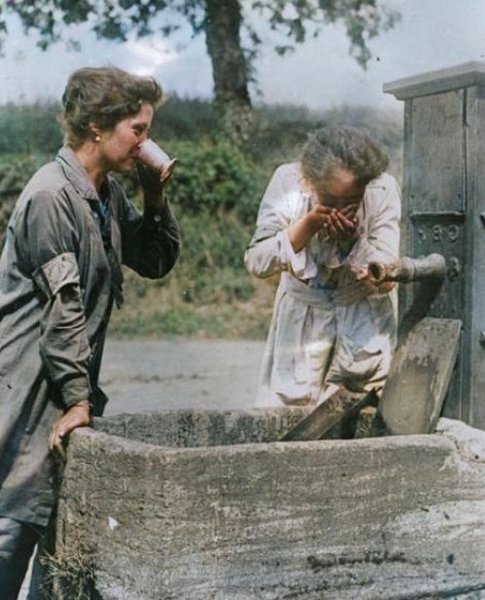
Girl workers getting a drink from a pump on their way home.
.... and then, back at the Flax Factory
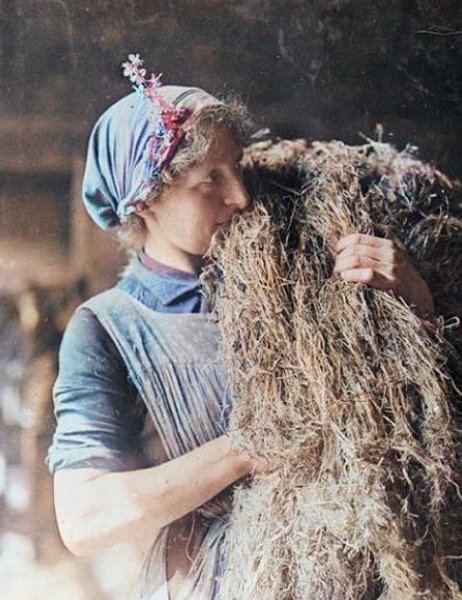
A girl holding a large bundle of flax.
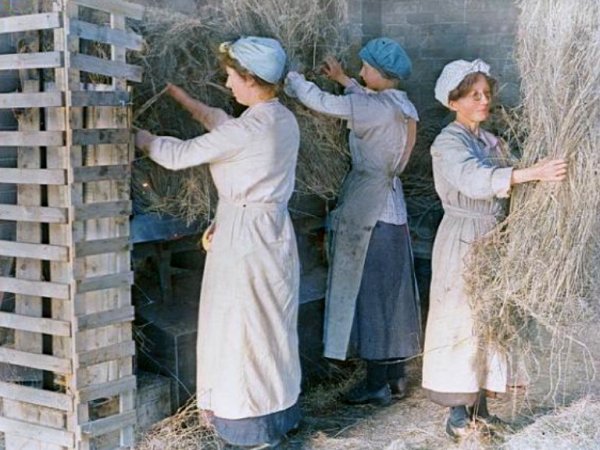
Evening up the lengths of flax for breaking.
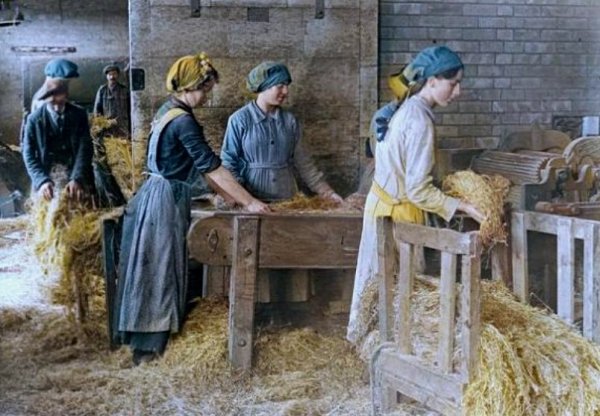
Breaking the flax.
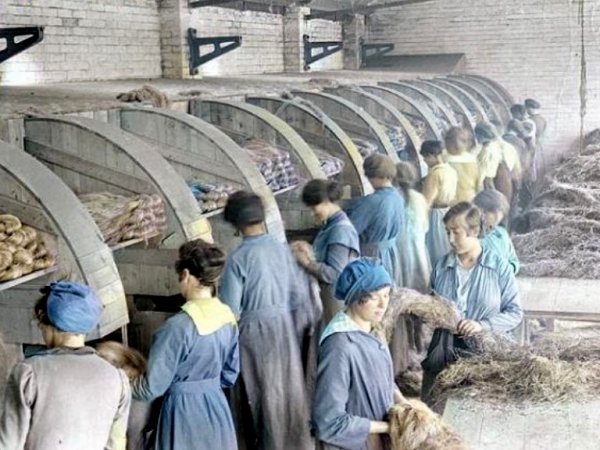
Scratching the flax.
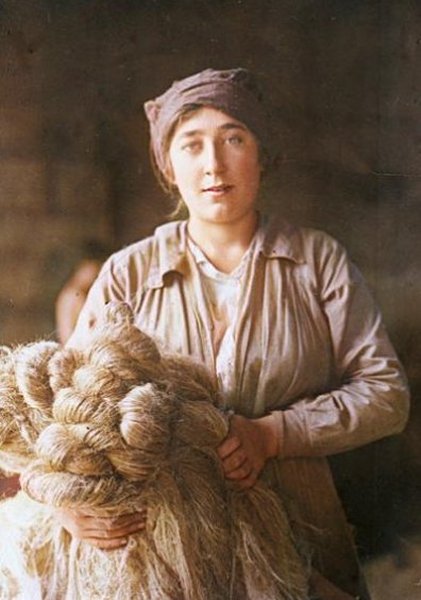
A girl with flax ready for spinning.
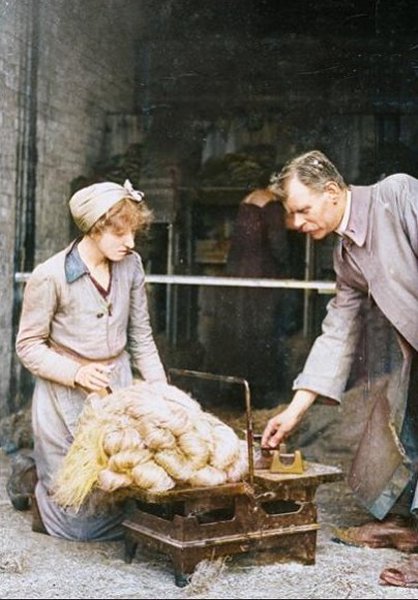
Weighing finished flax fibre.
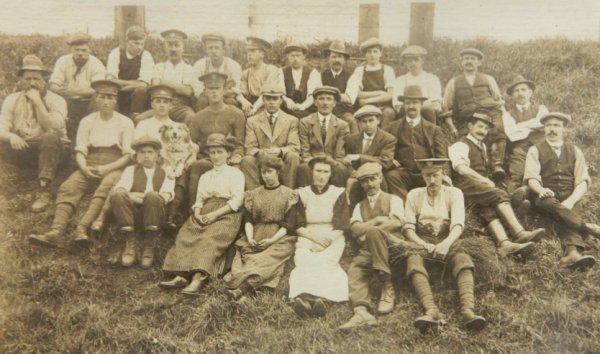
Courtesy of Jack
Sweet
Soldiers and civilian flax pullers in the Yeovil area during the First World War. Photographed by Witcombe & Son of Yeovil.